Special Report
America's Fastest Growing Beer Brands

Published:
Last Updated:

Americans buy a lot of beer — 210.5 million barrels in 2016 to be exact. As evidenced by considerable year-over-year changes in sales by brand, beer lovers can also be fickle when it comes to choosing their favorite brew.
The beer industry is subject to a range of market forces including evolving consumer preferences, shifting demographics, and pricey ad campaigns. The fastest growing beer brands in the United States — those with the highest percentage increases in shipments from 2011 to 2016 — have likely benefited from such factors.
24/7 Wall St. reviewed five-year changes in domestic shipping volume for 29 of the industry’s largest brands to identify America’s fastest growing beer brands. While the total volume of beer shipped in the United States climbed 3.8 million barrels from 2011 to 2016, some brands far out performed the overall trend — more than doubling in overall sales.
Click here to see the America’s fastest growing beer brands.
Click here to read our detailed findings and methodology.

10. Coors Banquet
> Sales change (2011-2016): 20.8%
> Barrels shipped in 2016: 1.6 million
> Owner: Molson Coors Brewing Company
Upon its release, Coors Banquet was only available in 11 states, all of which were west of the Mississippi River, and the brew did not find its way to the East Coast until 1976. By 1991, the beer could be purchased in all 50 states. Its popularity continues to grow to this day, shipping 1.6 million barrels in the U.S. in 2016 — well above the 1.3 million barrels the brand shipped in 2011.
Many popular, mass produced beer brands have reported considerable shipment declines in the last five years. Coors Banquet is an exception.
[in-text-ad]

9. Blue Moon (all)
> Sales change (2011-2016): 23.2%
> Barrels shipped in 2016: 2.1 million
> Owner: Molson Coors Brewing Company
After studying beer brewing in Brussels, brewmaster Keith Villa introduced in 1995 his own twist on the classic Belgian wit beer. He tweaked the original Belgian Wit recipe by adding Valencia orange peel and coriander to yield Blue Moon Belgian White. Over the years, the craft brew and the Blue Moon brand has become increasingly popular, with U.S. sales growing from 1.7 million barrels in 2011 to 2.1 million in 2016.
While it can be difficult to accurately assess the impact of ad campaigns, climbing Blue Moon sales may be partially attributable to savvy marketing. In 2016 the company changed its ads tagline to “something’s brewing.” The new ads replaced outdated stop-motion ads with the tagline “artfully crafted” in an attempt to redefine the brand.

8. Bud Ice
> Sales change (2011-2016): 25.0%
> Barrels shipped in 2016: 2.5 million
> Owner: Anheuser-Busch InBev SA/NV
American drinkers were introduced to ice beers are in 1993. These are characterized by a unique brewing process during which the beer is brought down to freezing temperature in order to create ice crystals. The method is purported to give the beer a smoother taste.
Demand is waning for many of the most popular ice beers in the United States. Total shipments of brands like Icehouse, Natural Ice, and Milwaukee’s Best Ice are all down at least 6% over the last five years. Bud Ice, however, is an exception to the rule. Breaking from the broader trend, Bud Ice shipments are up 25%, climbing from 2.0 million barrels in 2011 to 2.5 million in 2016.
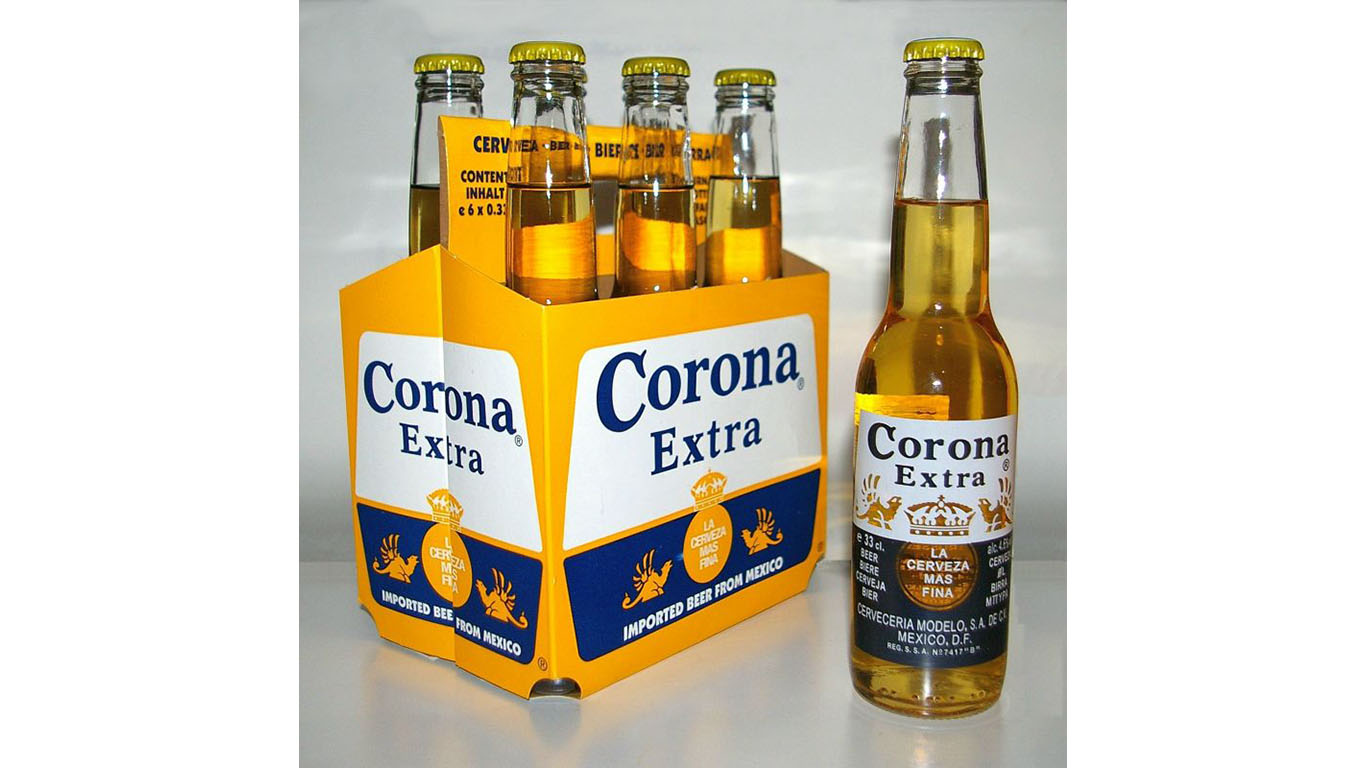
7. Corona Extra
> Sales change (2011-2016): 25.6%
> Barrels shipped in 2016: 8.6 million
> Owner: Constellation Brands
This Mexican lager is one of many imports from Mexico that have been performing very well, as far as sales go, in the past several years in the U.S. Corona began production in 1925, and is now parent company Constellation Brands’ top selling import brand in the United States.
Eric Shepherd, executive editor at Beer Marketer’s Insights, suggests the increased popularity of the Corona Extra is likely due to the country’s ever-growing Hispanic population and the owner’s marketing campaigns. In 2015, Constellation Brands spent $426.1 million on advertising — up from $361.1 million the previous year. About 30% — $125.8 million — of Constellation’s 2015 advertising spending went towards the Corona brand.
[in-text-ad-2]
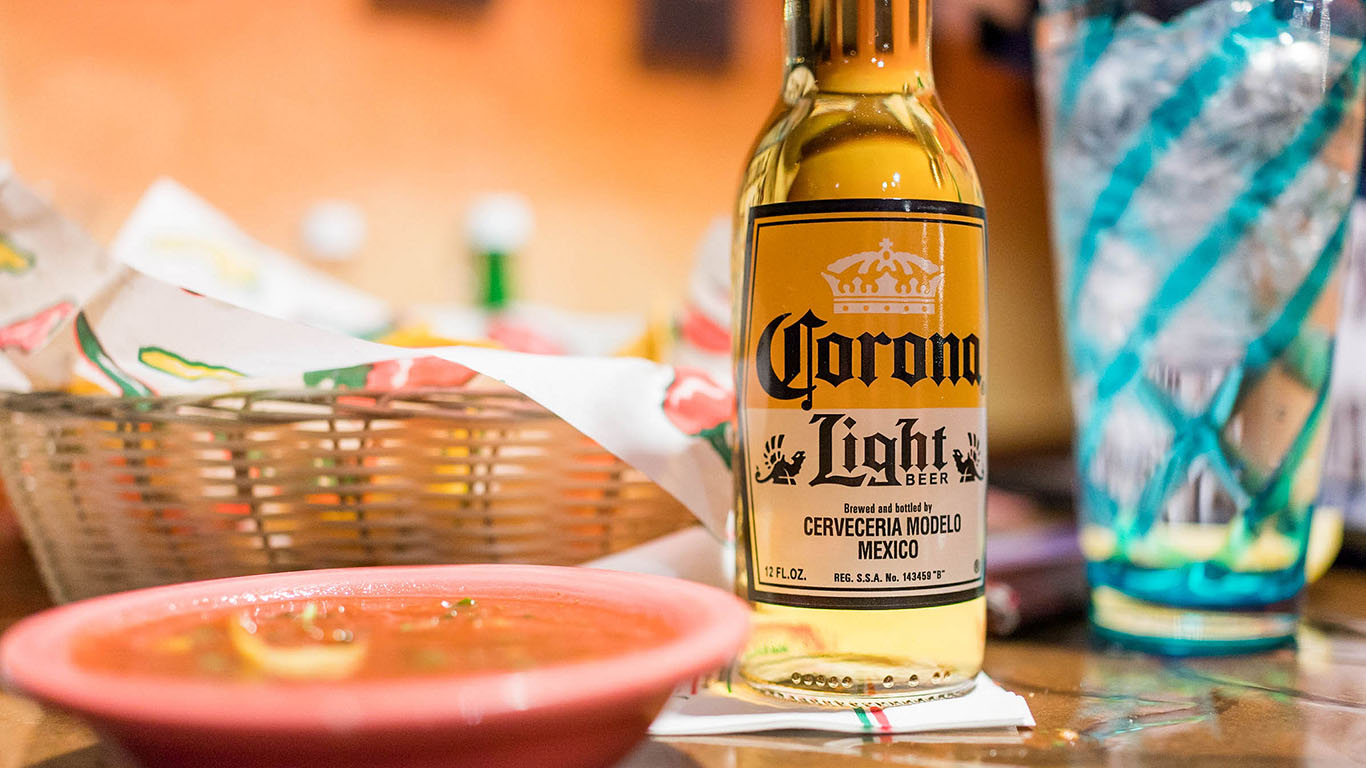
6. Corona Light
> Sales change (2011-2016): 26.8%
> Barrels shipped in 2016: 1.2 million
> Owner: Constellation Brands
According to owner and U.S. distributor Constellation Brands, Corona Light is the top selling imported light beer in the United States. Not as popular as Corona Extra — which shipped 8.6 million barrels in the U.S. in 2016 — Constellation Brands sold 1.2 million barrels of the lower-calorie Corona Light in 2016, a 26.8% increase over 2011.
Most mainstream brands are not among the fastest growing beers due to a slew of reasons, including their lack of diversity and a growing preference to more expensive craft crews. However, Constellation Brands is an exception with both Corona and Modelo ranking among the top 10 fastest growing beer brands in the country.
>div>
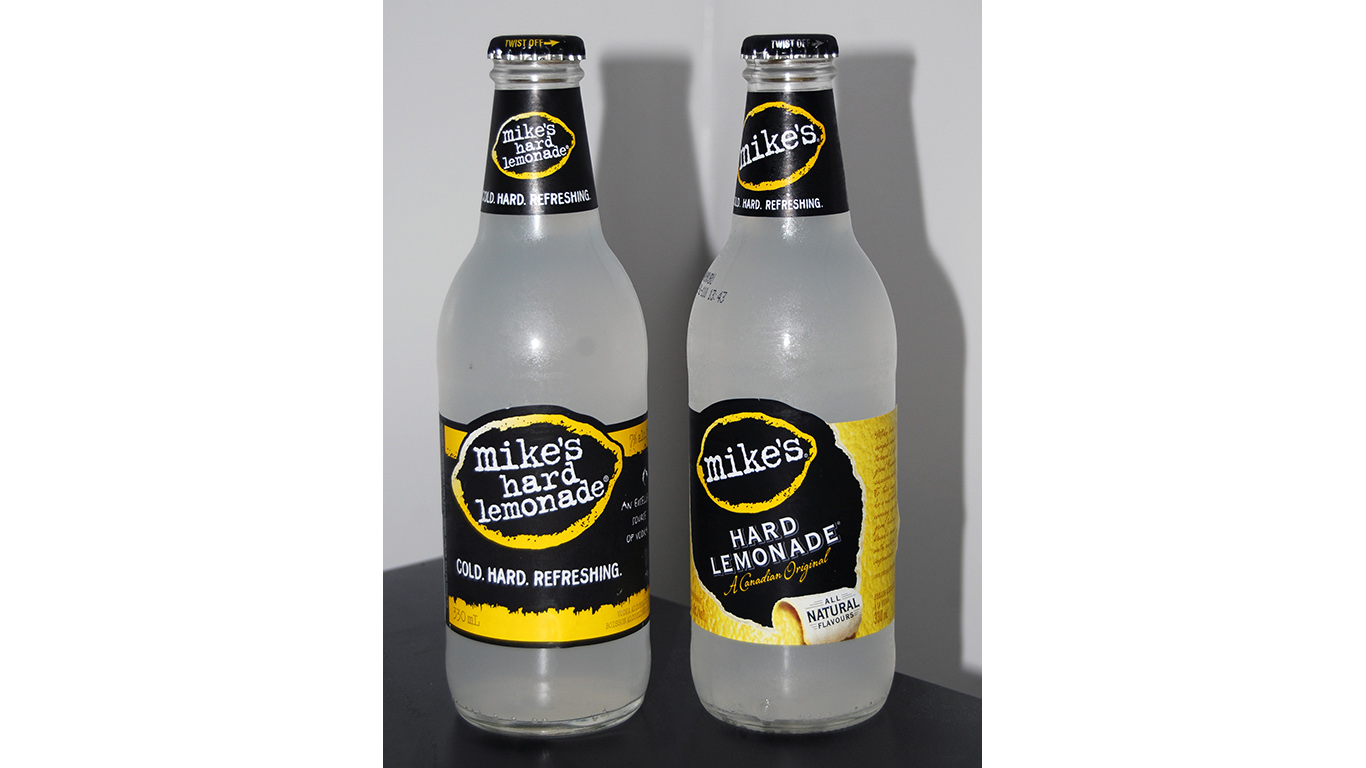
5. Mike’s (all)
> Sales change (2011-2016): 33.6%
> Barrels shipped in 2016: 1.8 million
> Owner: Mark Anthony Group, Inc.
Mike’s fruit flavored malt beverages have done remarkably well over the past several years, with shipments increasing 33.6% from 2011 to 2016. Over the same period, the brand has overtaken other fruit flavored alcoholic beverages in popularity. For example, Bud Light Lime shipped 1.6 million barrels in 2011 while Americans bought only 1.3 million barrels of Mike’s. By 2016, domestic Bud Light Lime sales fell to 1.0 million barrels while Mike’s sales soared to 1.8 million.
Doubling its business since 2009, Mike’s brand growth extends beyond the most recent five year period. Currently, the company offers a dozen flavors including mango, cranberry lemonade, strawberry lemonade, and its flagship product, original lemonade.
[in-text-ad]
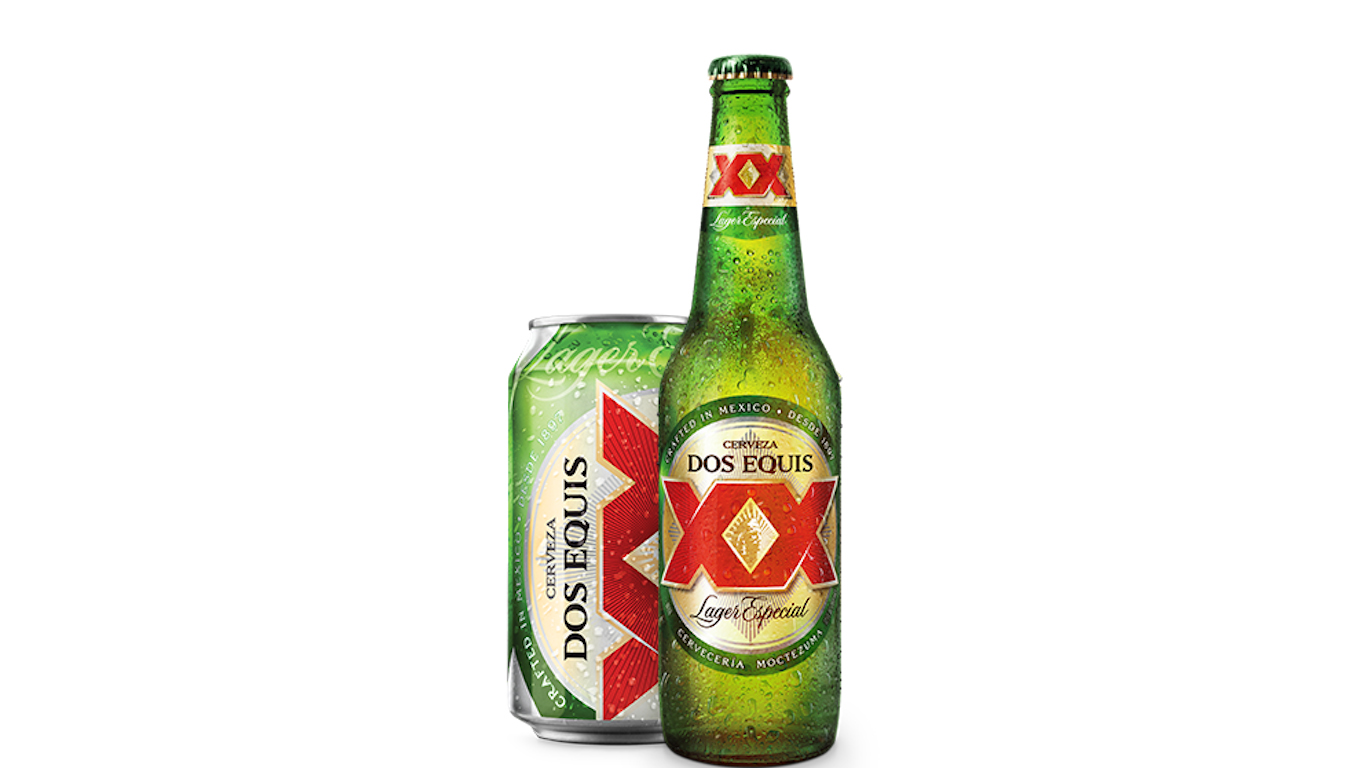
4. Dos Equis
> Sales change (2011-2016): 75.6%
> Barrels shipped in 2016: 2.0 million
> Owner: Heineken Holding N.V.
Introduced to the U.S. market in 1987, Dos Equis sales have grown remarkably fast in the U.S. over the years. Demand for the beer increased 75.6% between 2011 and 2016.
While it can be difficult to accurately assess the impact of ad campaigns, climbing Dos Equis sales may be partially attributable to savvy marketing. The brand’s surging popularity overlapped with its “Most Interesting Man in the World” ad campaign, which began 2006. Despite the campaigns apparent success, as of June, 2017, Heineken USA dropped Havas Worldwide, the ad agency behind the campaign.
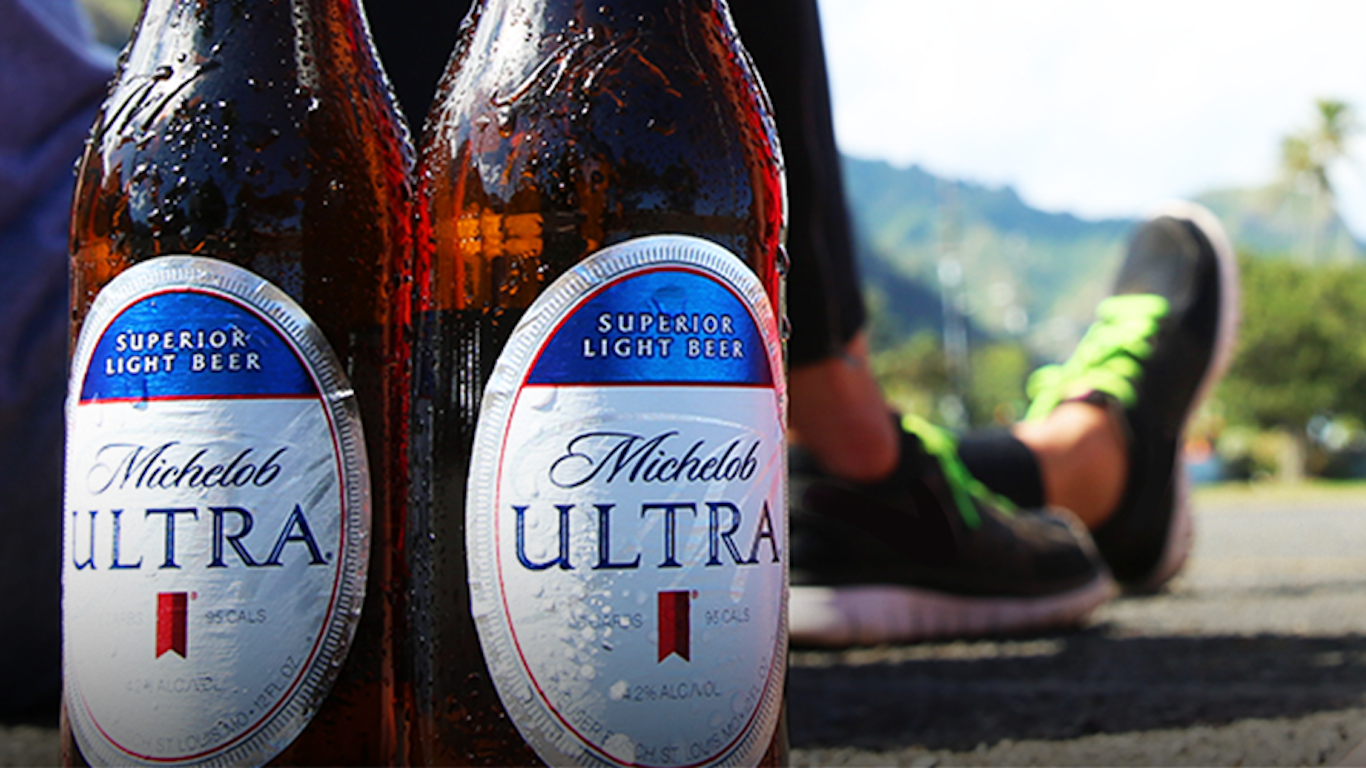
3. Michelob Ultra
> Sales change (2011-2016): 77.6%
> Barrels shipped in 2016: 6.4 million
> Owner: Anheuser-Busch InBev SA/NV
Even as sales of long-standing big name brands like Budweiser and Busch have been declining, sales of Michelob Ultra have been soaring, with shipments increasing by over 77% from 2011 to 2016.
The beer’s unique branding may partially explain its appeal — especially with health-conscious American consumers. Dubbed the “Superior Light Beer,” Michelob Ultra clocks in at just 95 calories and is featured in advertisements geared towards fitness conscious beer drinkers who lead active lifestyles. With more than 1 in 3 adult Americans considered obese, companies have been making strides to introduce lower-calorie products.
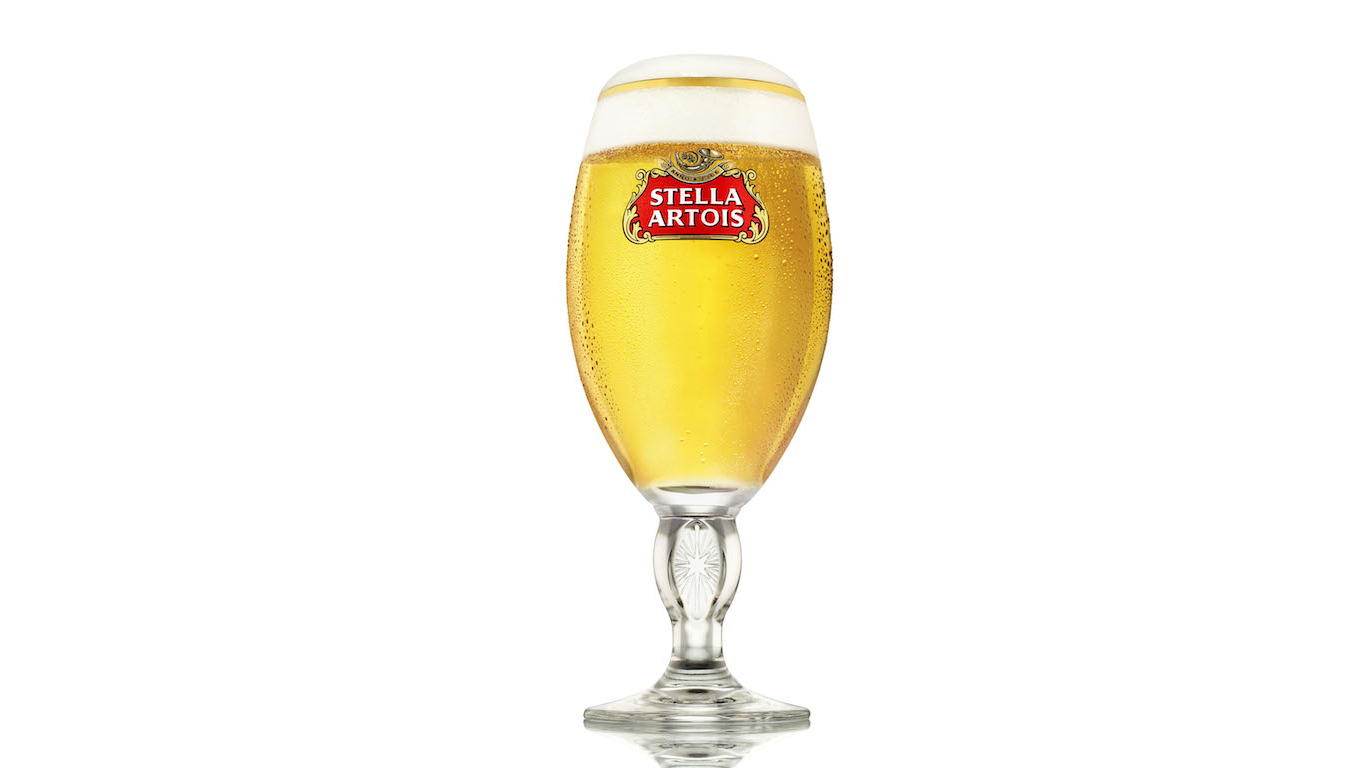
2. Stella Artois
> Sales change (2011-2016): 106.4%
> Barrels shipped in 2016: 2.4 million
> Owner: Anheuser-Busch InBev SA/NV
The second fastest growing beer in America happens to be one of the world’s oldest brews. The tradition in which the beer is made can be traced as far back as 1366 in Leuven, Belgium. The beer earned its name from Sebastian Artois, who became a brewmaster in 1708 — while Stella comes from the special Christmas batch that used to be made for residents of Leuven.
In the United States, shipments of Stella’s more than doubled in the last five years, with 2.4 million barrels shipped to the U.S. in 2016. Success on the marketing front is a likely factor behind the increase in Stella Artois sales. In 2015, Anheuser-Busch spent $55.9 million on advertising for Stella Artois, up nearly 50% the year before.
[in-text-ad-2]
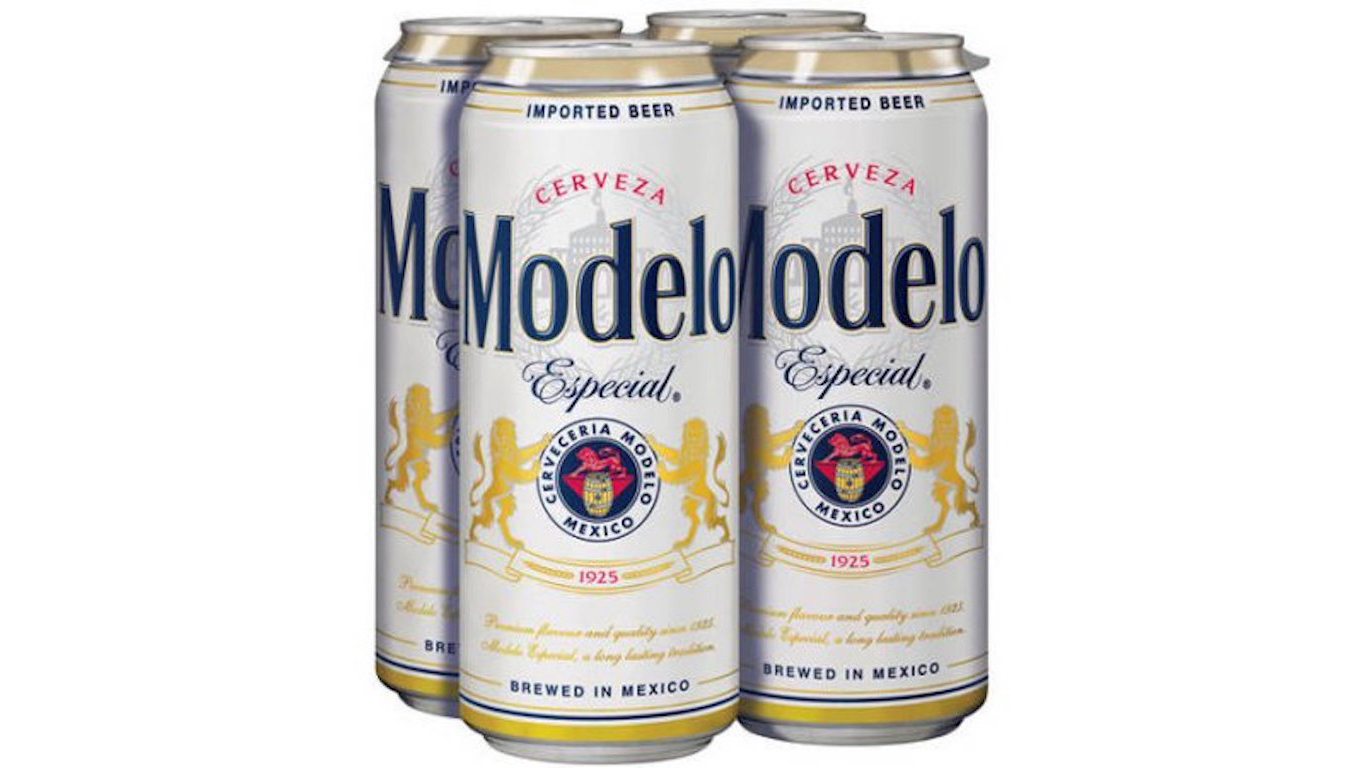
1. Modelo Especial
> Sales change (2011-2016): 133.3%
> Barrels shipped in 2016: 6.1 million
> Owner: Constellation Brands
For the second year in a row, the fastest growing beer in America is Modelo Especial — with domestic shipments increasing by 133.3% from 2011 to 2016. The country’s growing Hispanic population may be one reason for the immense growth of Mexican lagers like Modelo, Dos Equis, and Corona in recent years, according to Shepherd.
Modelo Especial’s roots lie in Mexico, with the first batch brewed in 1925. Shepherd also believes that engaging advertisements make a significant impact on the success of a beer brand. Constellation Brands spent $48.9 million on the marketing of Modelo in 2015, a 34.4% increase from 2014.
Detailed Findings & Methodology
While the beers on this list are the fastest growing, they are not necessarily the most popular — at least not yet. For example, Anheuser-Busch InBev shipped 33.8 million barrels of Bud Light in 2016 — the most of any brand — and only 2.4 million barrels of Stella Artois. Yet shipments of the popular Bud Light are down 13.4% from 2011, while shipments of Stella are up 106%.
Year over year sales changes are subject to a number of market forces. Eric Shepherd, executive editor for industry advocacy group Beer Marketer’s Insights, suggested that the growing Hispanic and Latino population is a huge contributor to the increased demand for some of the brands on this list. Of the 10 fastest growing beers in America, four are imported from Mexico. For example, “Corona has been around an awfully long time and continues to grow,” Shepherd said.
Demand for beer brands like Modelo and Corona is growing along with the Hispanic and Latino population in the U.S. Since 2009, the number if Americans identifying as Hispanic or Latino climbed by nearly 10 million to 57.4 million in 2016. Hispanic and Latino Americans currently account for 17.8% of the population.
Shepherd acknowledged that the growing craft beer movement is also having an impact on the industry. According to the Brewers Association, a not-for-profit trade association for brewers, craft brewer sales volume grew 6.2% in 2016, and now comprise 12.3% of the U.S. beer market by volume.
While craft beers are by definition small batch and were not considered for this list, some large beer brands have attempted to tap into the growing taste for these special brews. For example, though Blue Moon shipped over 2.1 million barrels in 2016, and is owned by Molson Coors — one of the worlds largest breweries — it is marketed in such a way that appeals to some consumers in the market for craft beer.
And marketing is important. Beer companies invest millions in advertising every year, and it seems one good ad campaign can do wonders for beer sales. For example, Anheuser-Busch InBev’s spending on its Michelob and Stella Artois brands increased 67.6% and 49.5% respectively from 2014 to 2015. Both brands rank among America’s fastest growing beer brands.
Meanwhile, Anheuser-Busch’s 2015 spending on Budweiser was 8.9% lower than the previous year. Over the last five years, Budweiser sales are down 22.2%.
To identify America’s fastest growing beer brands, 24/7 Wall St. reviewed shipment volumes provided by Beer Marketer’s Insights for all brands with more than 1 million barrels shipped in either 2011 or 2016. The beer brands on this list are the 10 with the largest five year shipment gains. The analysis excludes beer sold outside of the United States. Data on advertising expenditures came from Adage.com, a global media brand that delivers insights, analysis, news, and data on marketing and media.
Are you ready for retirement? Planning for retirement can be overwhelming, that’s why it could be a good idea to speak to a fiduciary financial advisor about your goals today.
Start by taking this retirement quiz right here from SmartAsset that will match you with up to 3 financial advisors that serve your area and beyond in 5 minutes. Smart Asset is now matching over 50,000 people a month.
Click here now to get started.
Thank you for reading! Have some feedback for us?
Contact the 24/7 Wall St. editorial team.